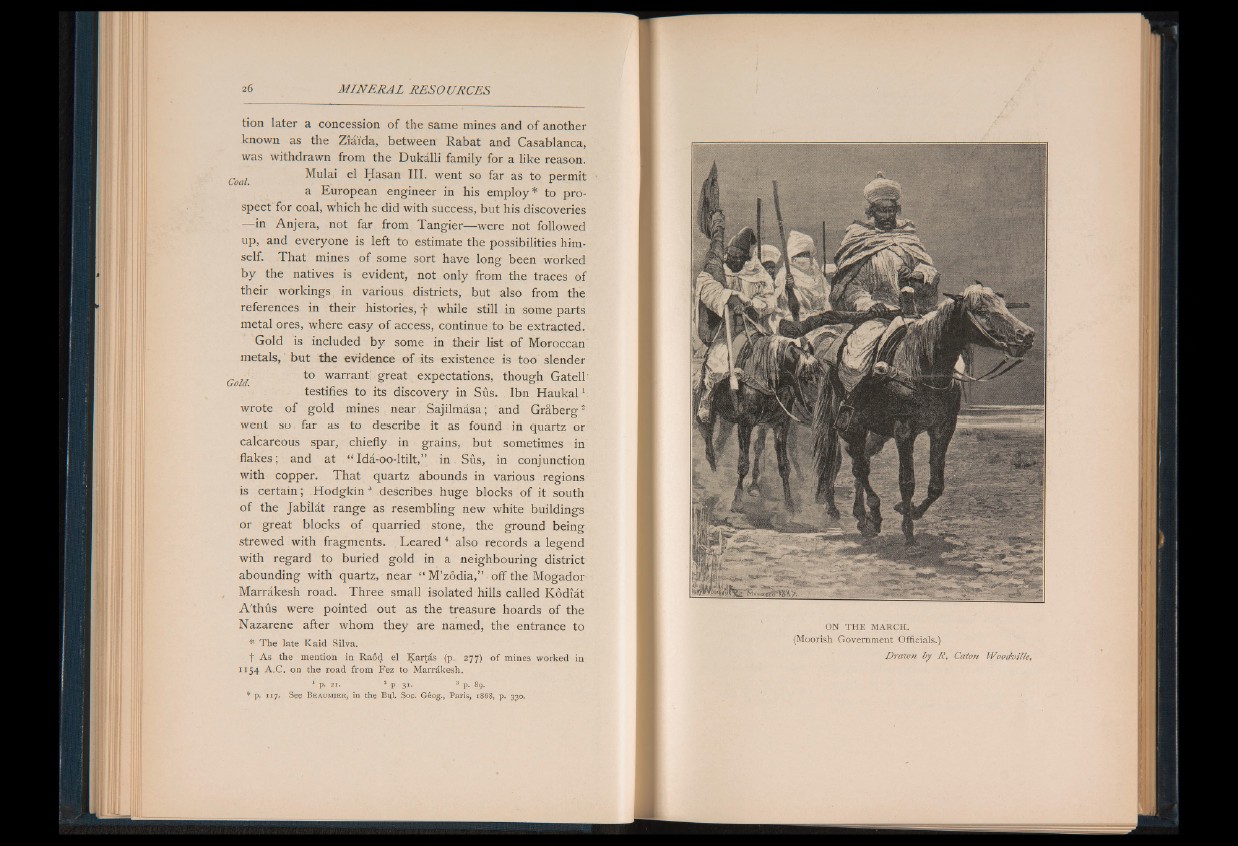
tion later a concession of the same mines and of another
known as the Ziaida, between Rabat and Casablanca,
was withdrawn from the Dukalli family for a like reason.
Coal Mulai el Hasan III. went so far as to permit
a European engineer in his employ* to prospect
for coal, which he did with success, but his discoveries
— in Anjera, not far from Tangier— were not followed
up, and everyone is left to estimate the possibilities himself.
That mines of some sort have long been worked
by the natives is evident, not only from the traces of
their workings, in various districts, but also from the
references in their histories, f while still in some parts
metal ores, where easy o f access, continue to be extracted.
Gold is included by some in their list o f Moroccan
metals, but the evidence of its existence is too slender
Gt)!J to warrant' great expectations, though Gatell
testifies to its discovery in Sus. Ibn Haukal1
wrote o f gold mines near Sajilmasa; and Graberg2
went so far as to describe it as found in quartz or
calcareous spar, chiefly in grains, but sometimes in
flakes; and at “ Ida-oo-ltilt,” in Sus, in conjunction
with copper. That quartz abounds in various regions
is certain; Hodgkin 3 describes huge blocks of it south
of the Jabilat range as resembling new white buildings
or great blocks of quarried stone, the ground being
strewed with fragments. Leared 4 also records a legend
with regard to buried gold in a neighbouring district
abounding with quartz, near “ M’zodia,” off the Mogador
Marrakesh road. Three small isolated hills called Kodiat
A'thus were pointed out as the treasure hoards of the
Nazarene after whom they are named, the entrance to
* The late Kaid Silva.
f As the mention in Raod el Kart£s (p. 277) of mines worked in
1154 A.C. on the road from Fez to Marrakesh.
1 p. 21. | p. 31. 3 p. 89.
* p. 117. See Beaumier, in the Bi*l, Soc. Geog., Paris, ±868, p. 330,
ON TH E MARCH.
(Moorish Government Officials.)
Drawn by R, Caton Woodville,